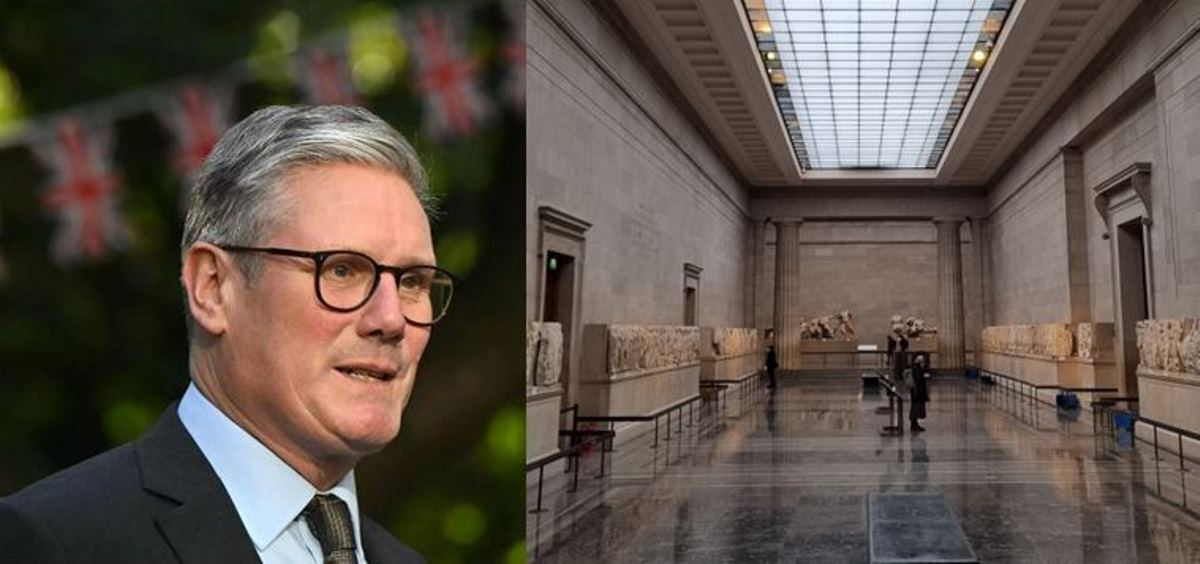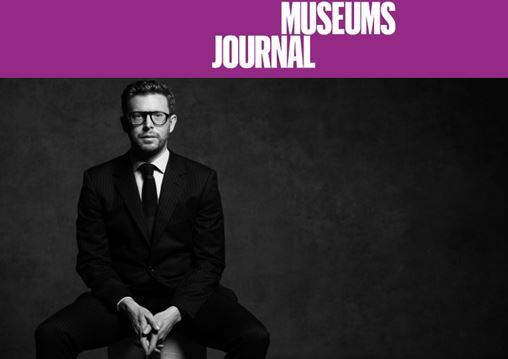KATHIMERINI English Edition 11-3-2007
Decades of diplomacy fell on deaf ears. The return in 2004 of the Olympic Games to their ancient birthplace was not a compelling enough argument. Now Greek authorities hope that an empty glass chamber opposite the Parthenon will shame British officials into returning the collection of sculptures cut from Athens's most revered monument two centuries ago.
This could be the trump card in Greece's tireless campaign to recoup the world's most contested works of art: the Parthenon Marbles to those who seek their return, the Elgin Marbles to those who say they belong in the British Museum, where Lord Elgin sold them in 1816.
As Athens' New Acropolis Museum nears completion, and the painstaking process of transferring priceless artefacts from the old museum on the Parthenon to the spacious new building gets into full swing, attention is again focused on what is missing from Greece's rich ancient legacy.
The new museum – a light-suffused modern structure crowned by an empty glass gallery aligned with the Parthenon – articulates silently what legions of diplomats have been unable to convey: that the Marbles are not where they should be.
Due to open late next year, the work of Swiss-born architect Bernard Tschumi has impressed foreign art critics, some of whom had backed the British argument for keeping the sculptures in London's landmark museum.
Following a recent visit, The New York Times architecture critic, Nicolai Ouroussoff, enthused: "It's impossible to stand in the top-floor galleries, in full view of the Parthenon's ravaged, sun-bleached frame, without craving the marbles' return." On a subsequent visit to London, Ouroussoff observed, the displaced sculptures "looked homesick."
The Guardian's Stephen Moss makes a similar point: "(Lord) Byron was right, and it's time to fill the gaps the Greeks are so tellingly leaving in their new museum."
It is this absence – highlighted so poignantly by the new museum's design – that Greece hopes will make its case. "We want visitors to wonder where the sculptures are," says Greece's culture minister, Michalis Liapis.
The new wave of optimism has given fresh impetus to lobbyists. "The completion of the New Acropolis Museum is the best and final argument for where the sculptures belong," says Eleni Cubitt, of the British Committee for the Reunification of the Parthenon Marbles, one of several pressure groups around the globe. Cubitt is seeking to recruit young British architects as "the most persuasive promoters for the reunification of the Marbles in such a unique building."
One institution remains unmoved by this new wave of optimism. Although it has quietly dropped its original argument – that Athens lacked an appropriate venue to display the Marbles – the British Museum is unflinching in its conviction regarding "the trustees' legal ownership" of the sculptures and the important role they play in its collection. "The Museum exists to present a unique overview of world cultures and the sculptures are a vital part of that overview," say spokesperson Hannah Boulton, adding that the Marbles explain "Greece's cultural links with other great civilizations of the ancient world." With 5 million visitors a year and no entrance fee, it makes Phidias' sublime works accessible to all, she says.
But the current "zeitgeist" seems to favour campaigners' arguments. This year has seen renewed debate about art restitution with major museums under increasing pressure to return artefacts to their countries of origin. Both Greece and Italy have received antiquities from the Los Angeles J. Paul Getty Museum and New York's Metropolitan Museum of Art after the pieces were shown to have been "improperly acquired."
But these artefacts had been relatively recent acquisitions. Proving the ownership of antiquities spirited away from their original locations centuries ago is another matter, experts say. There is no legal framework to support restitution claims in such cases.
UNESCO – the United Nations' agency promoting the arts whose presidency Greece assumed last month – has a certain prestige but cannot oblige governments to return plundered antiquities. So it comes down to the good faith of these countries.
Leading British archaeologist Lord Colin Renfrew calls for an "international consensus on which antiquities 'belong' in their place of origin." Such a pact "would be a strong argument for the return of the Parthenon Marbles to Athens," he says. But artefacts should be repatriated selectively, he notes, as "there must be a role for international museums."
Many argue that returning the Marbles would trigger a flurry of dubious claims by governments against museums.
The British Museum insists that masterpieces like the Marbles, which form an integral part of established exhibitions, should be non-negotiable. "There is a clear distinction between the current illicit trade in antiquities and the existence of historic museum collections on which so much of the world's knowledge about its past is based," says Boulton.
The museum is equally intractable in the case of another of its crowd-pullers: the Rosetta Stone, a carved granite slab that was the first key to deciphering Egyptian hieroglyphics. But Egypt has boosted efforts to recoup the piece as plans to build a 380-million-euro museum near the pyramids in Cairo get under way. Zahi Hawass, head of Egypt's Supreme Council of Antiquities, has appealed to Britain to return "the icon of our Egyptian identity."
His words bring to mind an appeal for the Marbles made at Oxford University in 1986 by Greece's late culture minister Melina Mercouri: "They are our pride. They are our sacrifices...They are the essence of Greekness."





Comments powered by CComment